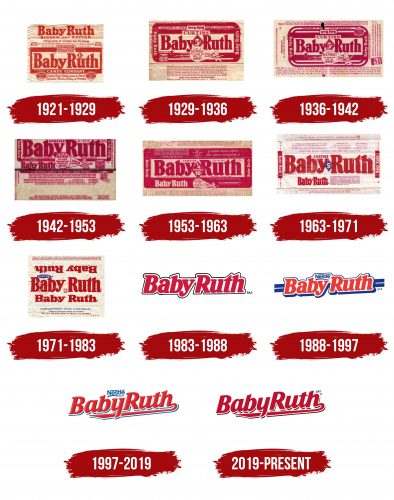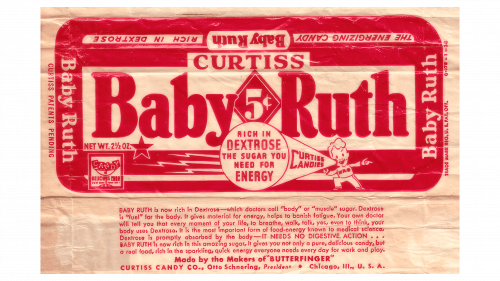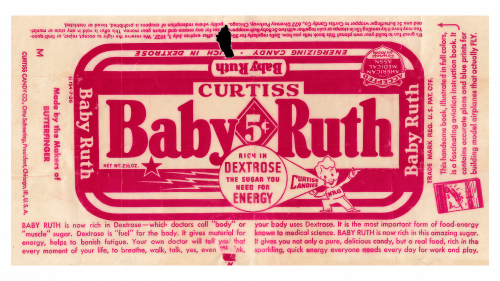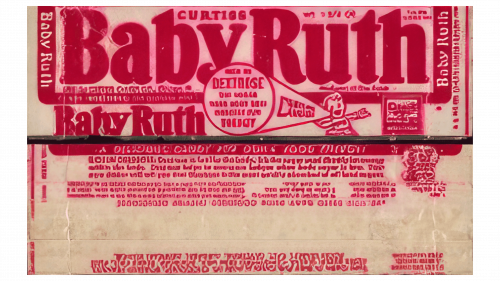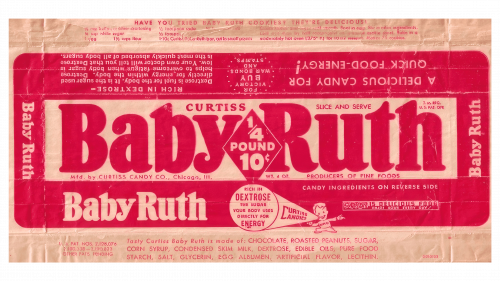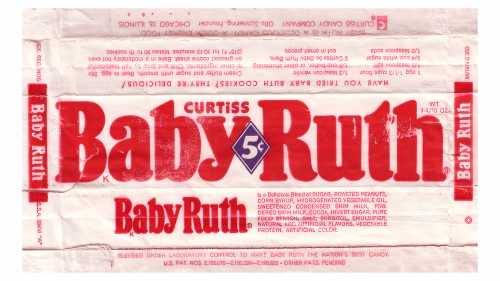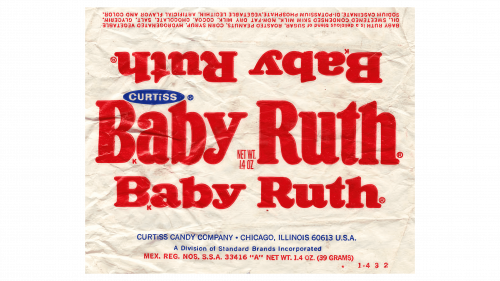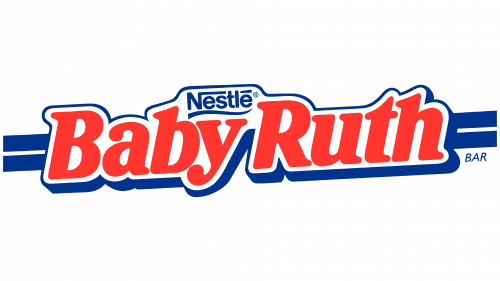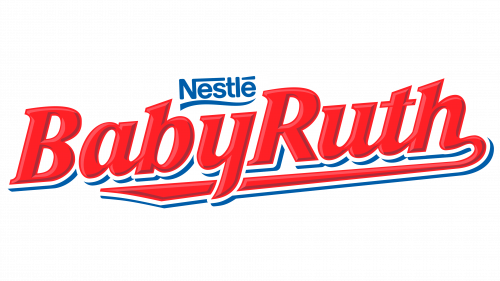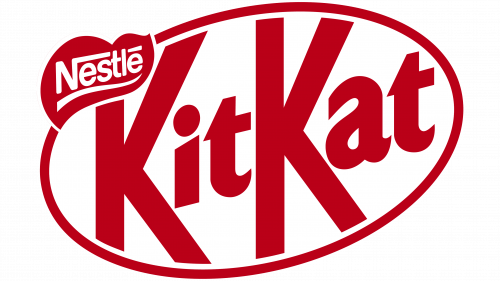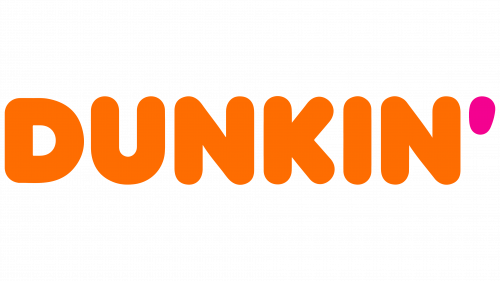The BabyRuth logo reminds us that everyone’s life should be sweet. Looking at it, you feel it’s the perfect time for a gastronomic delight. The creator of these delicious bars aims not just to attract attention but to be memorable, and it’s safe to say they succeed!
BabyRuth: Brand overview
In 1920, Otto Schnering’s Chicago-based Curtiss Candy Company chose to develop a new chocolate bar, which marked the beginning of Baby Ruth’s history. The company sought to make a product that would stand out in the market, and they already had expertise in creating candy.
Baby Ruth was first presented to the public in 1921. The bar was made of nougat dipped in caramel, mixed with peanuts, and topped with milk chocolate. Customers immediately noticed this novel component combination.
The origin of the name “Baby Ruth” is not entirely clear. According to the Curtiss Candy Company’s official account, the bar was named for Ruth Cleveland, the daughter of President Grover Cleveland. Many thought this was an attempt to profit off baseball player Babe Ruth’s fame without crediting him for using his name. This dispute increased the product’s notoriety.
The candy bar rose to prominence as one of the country’s most beloved candy bars in the 1920s. The corporation employed innovative marketing techniques to advertise the product. One thousand nine hundred twenty-three, hundreds of Baby Ruth bars were dropped from an aircraft over Pittsburgh, and tiny parachutes were fastened. This publicity effort garnered a lot of attention and raised brand awareness.
Because it only cost five cents per bar, the candy bar maintained its popularity in the 1930s, even during the Great Depression. Because of this, it was still affordable.
Due to its inclusion in American soldiers’ rations during World War II in the 1940s, the product’s fame expanded globally. The brand’s popularity kept rising after the war.
Standard Brands purchased the Curtiss Candy Company in the 1960s. This transaction broadened the bar’s distribution, and marketing and advertising expenditures rose.
The ownership of the brand underwent multiple changes throughout the 1970s and 1980s. Standard Brands and Nabisco Brands combined in 1981, and RJR Nabisco purchased Nabisco in 1988.
1990 RJR Nabisco sold Baby Ruth and other candy brands to Nestle. Nestlé’s leadership gave the product fresh impetus, which was introduced in new forms, such as miniature bars.
Nestlé maintained its investment in the brand in the 2000s, introducing fresh marketing initiatives and modernizing packaging. With its timeless flavor and design, the candy bar continued to be a well-liked chocolate bar in the US.
Consumer interest in food product composition increased in the 2010s. In response, Nestlé started raising the bar of ingredients caliber to use more natural ingredients without sacrificing flavor.
2018 saw a noteworthy development in the candy bar’s past. Ferrero purchased Nestlé’s American confectionery division, which included Baby Ruth. This was the beginning of a new era for the brand, which is today offered by one of the biggest producers of chocolate worldwide.
Ferrero purchased the candy bar brand in 2018, and the heritage of this iconic candy kept changing. In 2019, Ferrero started adding the product to its lineup. The corporation thoroughly analyzed the product’s market positioning and consumer impression to maintain the brand’s historical tradition and recognition while creating a fresh development plan.
2020 brought about a big development for the candy bar. Ferrero disclosed modifications to the formula to enhance the bar’s quality. The company started utilizing roasted peanuts at Ferrero’s plant and substituted corn syrup with more natural inverted sugar syrup. These adjustments aimed to preserve the product’s traditional profile while improving the taste and texture.
Ferrero began a new marketing campaign in 2021, emphasizing the product’s illustrious past and standing as an “American classic.” The goal of the campaign was to draw in both new and existing customers. To meet the demands of different customer segments, the company also launched new product formats, such as sharing packs and miniature versions of the candy bar.
Ferrero continued to focus on the brand’s sustainable growth in 2022. One measure to make the packaging more environmentally friendly was using more readily recyclable materials.
The product line received growth in 2023. Ferrero experimented with various flavors and ingredients while retaining the familiar product foundation by introducing limited-edition seasonal bar variants. To reach a younger audience, the candy bar also increased its online presence by partnering with social media influencers and introducing interactive online marketing.
To take this traditionally American brand worldwide, Ferrero also attempted to increase the candy bar’s distribution in foreign regions during this time.
Meaning and History
The identity emphasizes simplicity with great attention to graphics. There are no excesses, only beauty and grace, evident in every letter and flourish. The brand name is designed using modern trends and unique capabilities.
The logo contains no drawings or images; it is entirely text-based, which holds key significance. It is characterized by playfulness and maximum presentability. Red letters on a blue background look stunning. However, it wasn’t always like this!
What is Baby Ruth?
It is a brand of chocolate bars owned by Ferrara Candy Company, a subsidiary of Ferrero. The bar consists of peanuts, caramel and nougat covered with a layer of chocolate. It is known for its rich, chewy texture and pleasant combination of flavors. The brand has been a favorite among candy lovers for years, offering a classic and non-bananas treat. The candy is available in supermarkets, convenience stores and online stores, making it a convenient option for those looking for a sweet snack.
1921 – 1929
In 1921, an unusual logo emerged alongside the brand’s inception, becoming the company’s main presentation element that aimed to offer the world’s most delicious candy bar. Founder Otto Schnering, understanding the high demand for sweets, decided to conduct a confectionery experiment. He offered customers a product combining peanuts, caramel, and chocolate. This surprised sweet lovers and eventually became a favorite treat for all Americans.
This was reflected in the identity. The logo included traditional features of the company’s activities and priority development directions. It was informative and presented the company in the best light. It looked authentic, reminiscent of a newspaper or magazine page, with many red inscriptions in different fonts and arranged in various zones. This created the impression that every word was significant. The logo made you want to read the entire text from start to finish.
Red letters drew key attention on a light background. The logo was large and occupied a central position. A frame in the same shade emphasized the importance of the text, enhancing the visual effect. The logo had a news-like element. The phrase “Bigger and Better” was associated with future surprises the company had prepared.
With just one phrase – “Curtiss Candy Company” – the designers indicated the company’s authority and reliability. This suggested to sweet lovers that there was no need for a more refined taste and an interesting combination of ingredients.
The recommendation texts were conceptually important additions. BabyRuth bars not only provide pleasure and evoke a storm of positive emotions but also confirm the high quality and naturalness of the product. Caring for the health of potential customers is part of the company’s philosophy.
1929 – 1936
One look at the updated BabyRuth logo, which reflects the fashion trends of the time. The logo became more dynamic compared to the previous prototype. The focus is on brightness and presentability, emphasizing vivid colors and natural tones. Well-readable bright texts ensure high informativeness.
The brand name occupies the central position, a trend that will continue in subsequent versions of the identity. The name “BabyRuth” is written in one line with uppercase letters in a contrasting red color. Spacing between the letters creates a visual link that attracts attention.
The numerical value indicates the product’s affordability. During the crisis that affected all manufacturing sectors, designers used the symbol “5¢” to emphasize the product’s accessible price. Customer care played a key role in the company’s development. The contrasting approach—white numbers on a red background—makes the price information noticeable. This element was enclosed in a geometric diamond shape.
The new logo also features a cheerful boy sharing a secret: the bars are good for your health.
1936 – 1942
In 1936, designers chose a new direction and introduced a logo with a detailed product description to attract more customer attention.
Many elements, such as the brand name, the founding company’s name, and the cheerful boy, remained but underwent significant changes. The font became more detailed, and the boy’s image was more formal and realistic.
Information about the composition and nutritional value became the identity’s main element, emphasizing the product’s high quality. The logo conveyed that the bars benefited children and adults who wanted to be strong and healthy.
The color scheme became brighter, but the tonality remained consistent. The logo featured many geometric shapes that highlighted important information. The variety of fonts drew attention and encouraged reading even the small print, ensuring no detail was overlooked. This was a significant achievement: the logo became attractive and very informative.
1942 – 1953
Health and energy become particularly important during a historically challenging period. That is why a medical association’s approval of the presented product takes on primary significance in the updated logo version. This information is presented in an accessible and understandable text form.
The color palette has changed in line with the spirit of the times. Noticeable but not bright colors are used. Patriotism fosters resilience and helps maintain faith, so the boy in a sailor suit evokes nostalgia. He symbolizes trust in the product, emphasizing its high quality and ability to provide gastronomic pleasure.
The inscription “CURTISS” instills special trust in the sweets. It indicates the connection between the company and the brand, highlighting the manufacturer’s reliability, authority, and focus on customers first and foremost.
1953 – 1963
In 1953, designers successfully created a desire to taste the energy bar, inform about its quality, and present the brand at the highest level. They introduced a logo with an original design that stood out for its aesthetic beauty and substance.
They used geometric shapes, vibrant colors, and numerical values to emphasize the brand name. The brand name was highlighted in red on a white background, giving it a radiant appearance. The appeal was further enhanced by a rectangular frame with wide edges, making the name even more noticeable. The brand name was used more than four times in two shadow designs—white and red.
The character on the logo consistently communicates the high quality of the product, which can satisfy hunger and boost vitality. For the first time, the logo included the exact weight of the bar and the phrase “Curtiss Candy Co.”
1963 – 1971
The logo introduced in 1953 remained unchanged for nearly ten years. In 1963, it underwent modifications, accompanying a new phase of the company’s development and aligning with new identity trends. Three elements were most transformed: color, font, and text types.
The brand name is written in red on a light background and placed on a unified geometric plane. All letters are capitalized and graphically distinctive. Some have rounded corners and elements, while others feature sharp angles. The brand name appears more than five times on a single logo in various styles.
The numerical price, which first appeared on the logo almost 20 years earlier, was reintroduced. It remains in the same place—between the words “Baby” and “Ruth.” The price “5¢” is highlighted in white on a blue background and enclosed in a diamond-shaped frame. A curious customer can find the ingredients and nutritional information of the sweets on the logo.
The sailor boy is absent from the new logo, leaving his disappearance a mystery.
1971 – 1983
The new logo is distinguished by its graphical restraint, conciseness, and simplicity in presenting information. According to the designers, there is no longer a need to repeat information that is already familiar to customers. Highlighting the brand among competitors brightly and attractively is enough, so the red lettering, chosen long ago, remains. The light background stays the same, with only slightly reduced contrast.
The brand name is written twice in the center of the logo. Each instance is styled on a different scale and with different fonts, creating an effect of global reach and style. In a semicircle on a blue background, white letters indicate the brand’s affiliation with a long-standing company.
1983 – 1988
All graphic elements, word repetitions, product composition descriptions, and even characters disappear from the brand’s identity for the new period. Only the beautiful, bright visual design of the phrase BabyRuth remains. There is no longer a need to indicate the price or highlight significant elements on the logo.
The need to present the brand to customers in a way that allows them to quickly find high-quality and familiar-tasting products leads to the retention of the red color, which becomes more saturated. The white background focuses attention on the contrasting letters. A dark border frame enhances readability, creating an excellent perception of the two most important words and the background.
The main emphasis is on dynamic and stylish typography. Each letter is large and voluminous, and the bold font gives it energetic fullness, just like the company’s product. The taste and sensations of the BabyRuth treat are unforgettable and linger in memory after consuming just one bar.
1988 – 1997
The word “Nestlé” appears on the logo for the first time, reflecting the globalization of changes. The well-known American brand now belongs to an international company, which is beautifully depicted on the new logo. The word “Nestlé” is positioned at the top, above the brand name. The patriotic color scheme remains: the top text is in a strict tone, while the central one is in red.
The color policy unites the elements, making the logo harmonious. Rounded elements are combined with straight lines, giving volume to each character.
The brand name is displayed in large red letters, rising from the bottom left corner. This creates an impression of the company’s reliability and emphasizes trust in the manufacturer.
1997 – 2019
Red, white, and blue colors dominate the identity, demonstrating patriotism and emphasizing that high-quality products are made in the home country. The contrasting color scheme and the richness of each tone make all the text visible.
Accents are placed to highlight the brand name. The phrase is positioned in the central area of the logo. The word “Nestlé” is easily readable when glancing upward. The blue outline in the lower area under the letters underscores the brand’s and company’s strong competitive qualities.
2019 – today
A decision to update the brand identity was made closer to 2019. The main goals were to enhance readability and promote the product.
Minimalism is present in every letter and element. This period is characterized by the logo’s simplicity, featuring only the bright and shining brand name. The overall style is dynamic and aesthetically appealing. Large and elegant letters convey reliability, evoking the taste of sweet treats and high-quality products.
There are no outlines, shapes, or frames. They have been replaced by a single vertical line, slightly raised, that emphasizes and highlights the brand. This line is part of the last letter of the brand name – “h.”

